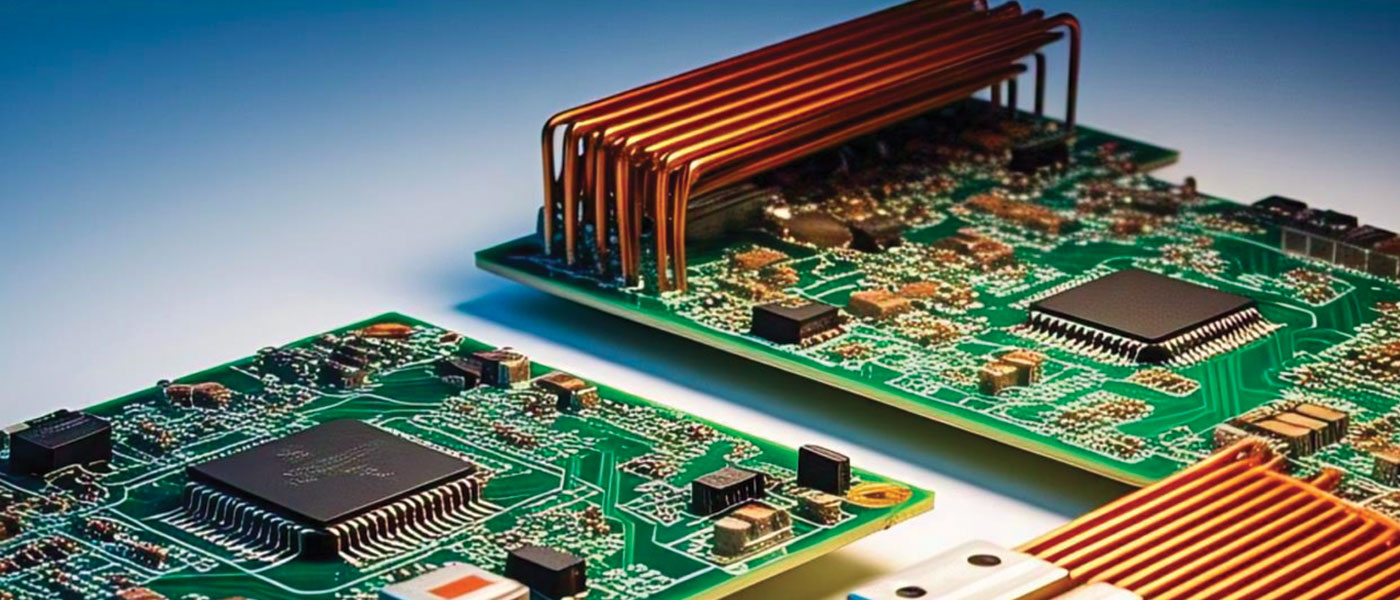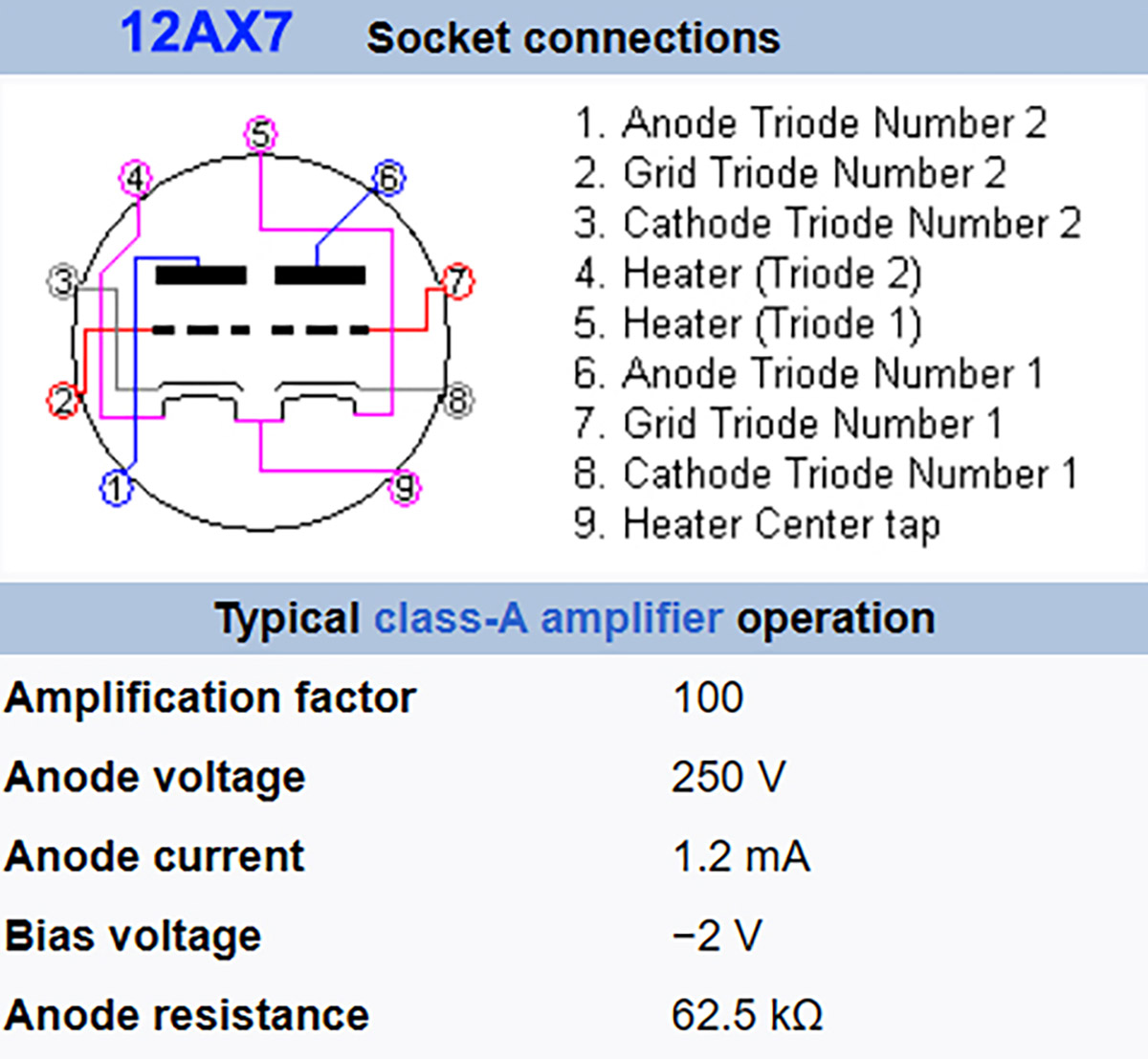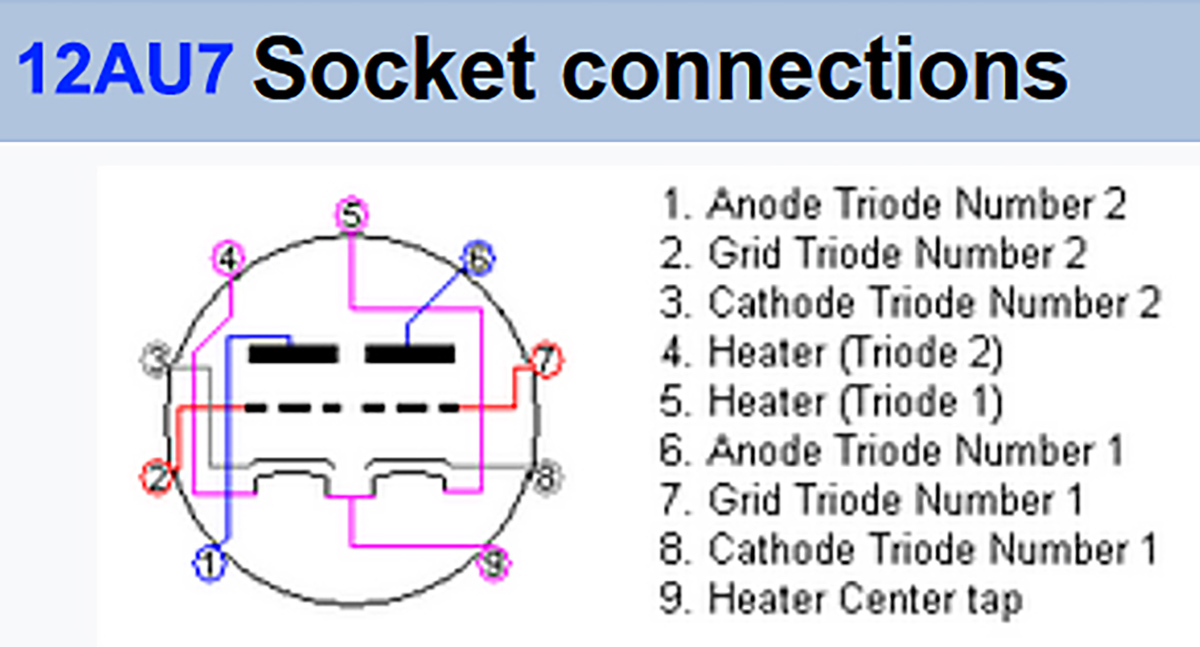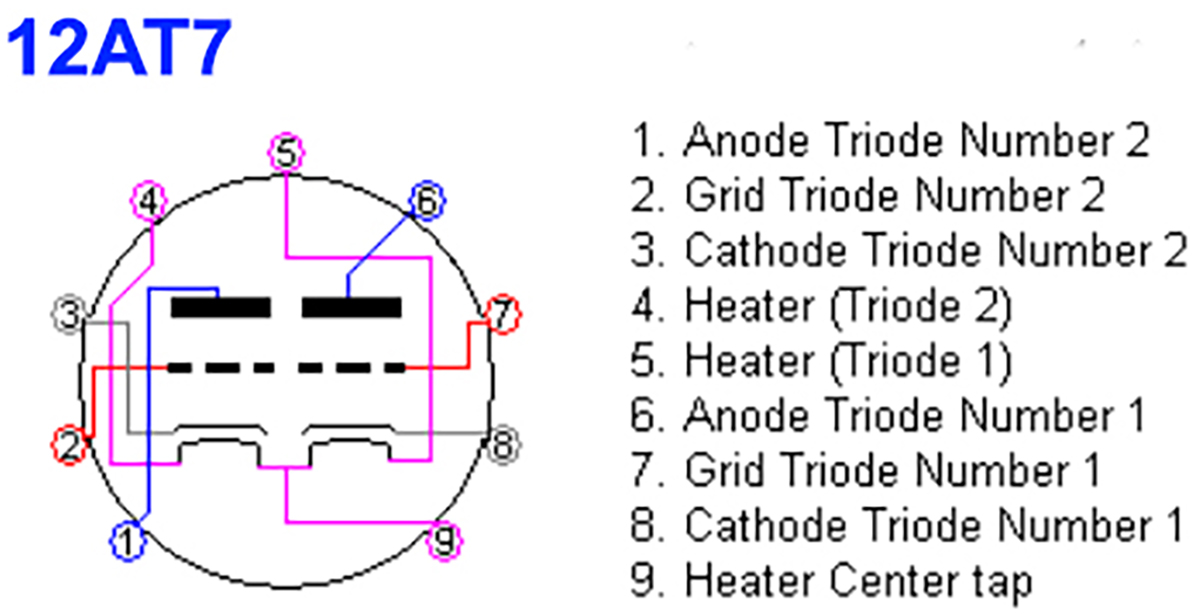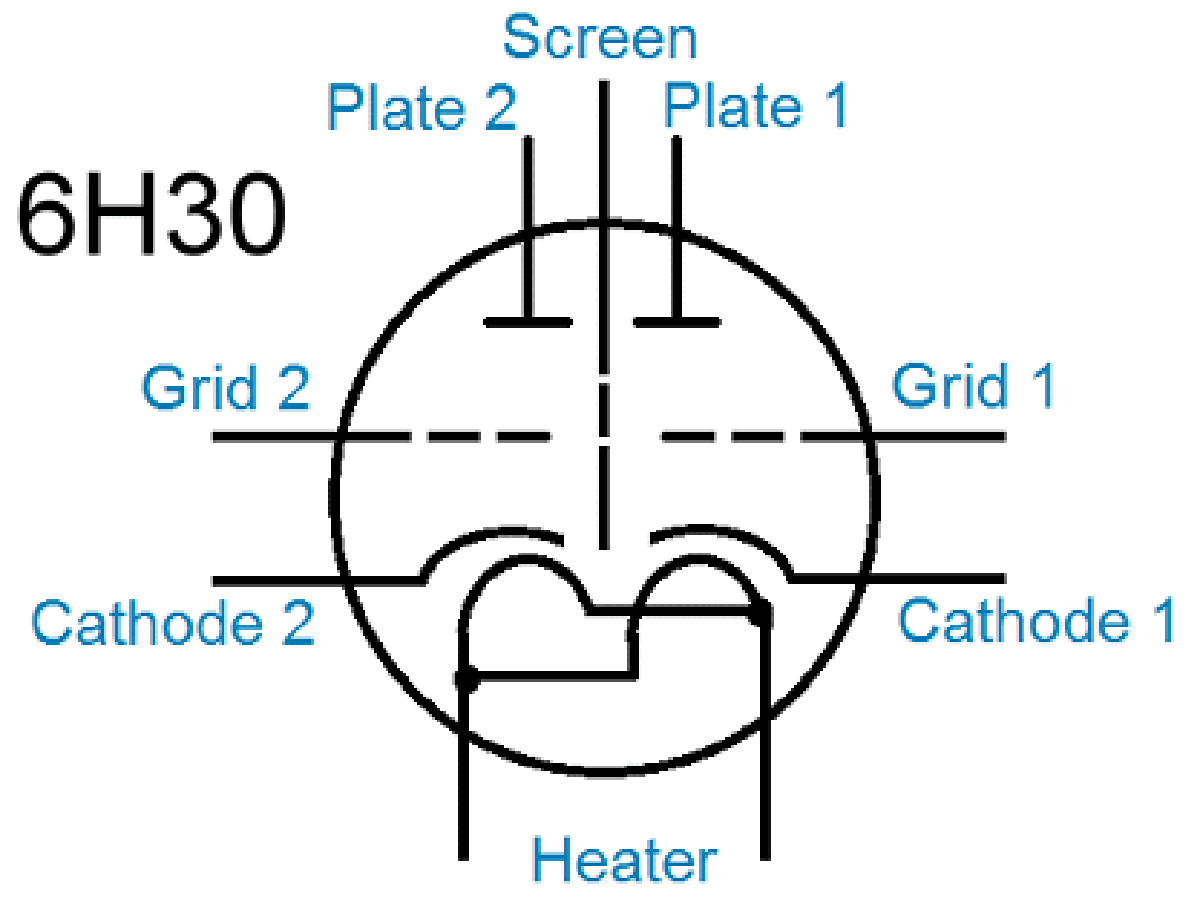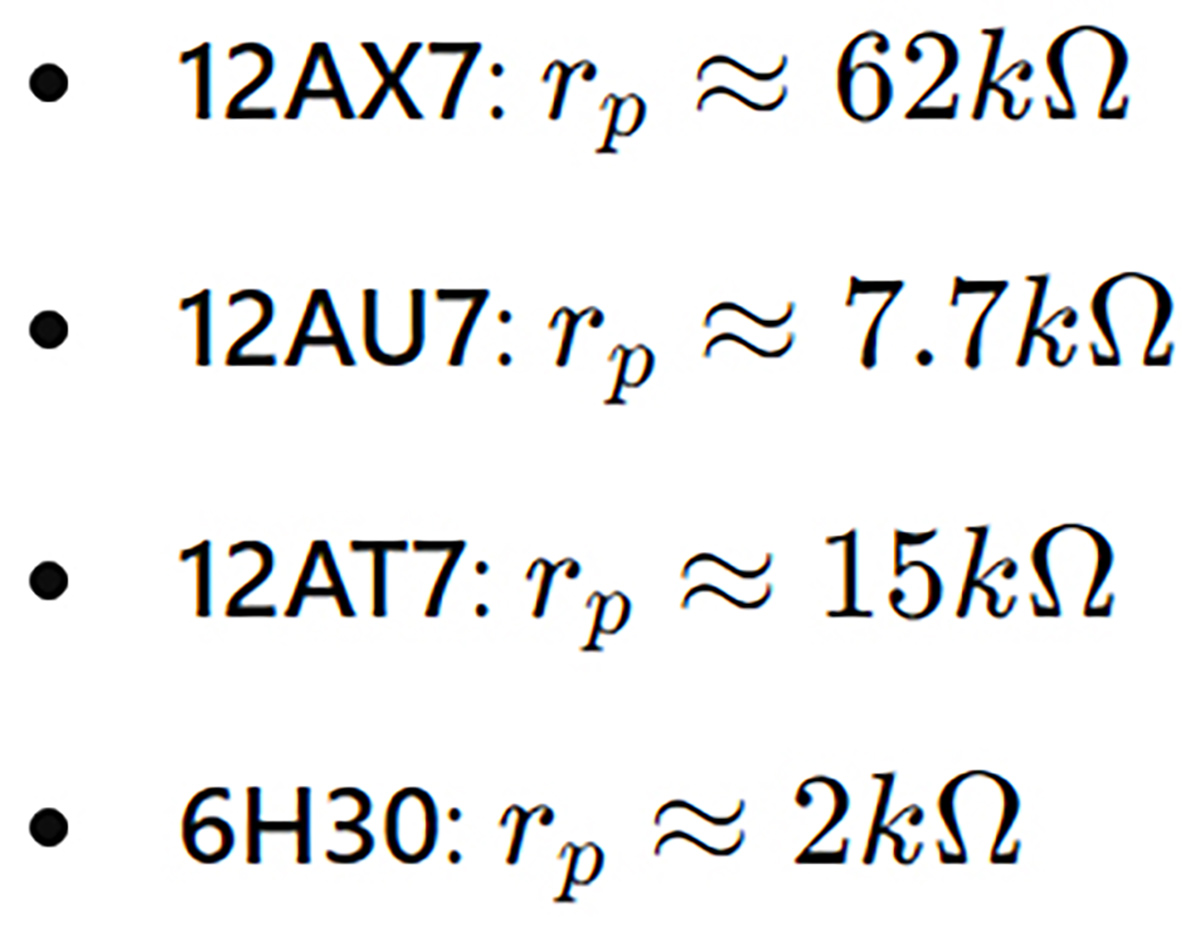They are dual triode tubes, meaning that there are two separate triodes in each glass envelope.
The 12AX7 and 12AU7 dual triode vacuum tubes have earned legendary status in the world of audio amplification, becoming indispensable components in countless guitar amplifiers, hi-fi systems, and professional recording equipment since their introduction in the 1940s. These miniature nine-pin tubes, each containing two independent triode sections within a single glass envelope, revolutionized amplifier design by offering engineers unprecedented flexibility and performance in a compact package. Developed by RCA and GE during the post-war electronics boom, these tubes quickly became industry standards due to their reliability, consistent manufacturing tolerances, and exceptional audio characteristics that continue to captivate musicians and audiophiles decades after their creation.
The enduring popularity of the 12AX7 and 12AU7 stems from their distinct yet complementary electrical properties that make them ideally suited for different stages of amplification. The 12AX7, with its high gain factor of 100, excels as a preamplifier tube, providing the voltage amplification necessary to boost weak input signals while contributing its characteristic warmth and harmonic richness that defines the “tube sound.” The 12AU7, offering lower gain but superior linearity and current handling capabilities, serves brilliantly as a driver tube or in applications requiring cleaner signal transmission. Together, these tubes form the backbone of classic amplifier topologies, their widespread availability and proven track record ensuring that both vintage equipment restoration and modern boutique amplifier design continue to rely on these time-tested components that bridge the gap between nostalgic authenticity and contemporary performance demands.
Oh, by the way, I will talk about the 12AT7 and 6H30 dual triodes too.
1. Gain (Amplification Factor)
- 12AX7: High gain (amplification factor of ~100), making it ideal for preamp stages, where signal amplification is crucial.
- 12AU7: Low-to-medium gain (amplification factor of ~20), which makes it better for buffering, phase inversion, or driver stages.
Tube pinout diagrams from Wikipedia.
2. Usage in Amplifiers
- 12AX7:
- Commonly used in preamp stages of guitar and hi-fi amplifiers.
- Produces more distortion when overdriven, giving it a classic warm, harmonically rich tone.
- Preferred in high-gain circuits for lead channels in guitar amps.
- 12AU7:
- Often used in driver or phase-inverter stages in push-pull amplifiers.
- Works well as a cathode follower or buffer because of its lower gain and higher current capability.
- Used in low-gain applications where signal transparency and headroom are more important.
3. Headroom and Distortion Characteristics
- 12AX7: Higher gain, lower current, and typically clips earlier, leading to more overdrive and distortion.
- 12AU7: Lower gain, higher current handling, and tends to stay cleaner for a longer range, offering a more controlled and dynamic sound.
4. Interchangeability
- They have the same pinout and can sometimes be swapped, but changing one for the other alters the circuit’s response:
- Replacing a 12AX7 with a 12AU7 lowers the gain, reducing distortion and output.
- Swapping a 12AU7 for a 12AX7 increases gain but might overload the circuit if not designed for it.
In Summary
- 12AX7 = High gain, low current, more distortion, great for preamps.
- 12AU7 = Lower gain, high current, cleaner sound, used for drivers and phase inverters.
12AX7 vs. 12AU7 in Guitar Amps vs. Hi-Fi Amps
Both 12AX7 and 12AU7 tubes are used in guitar and hi-fi amplifiers, but in very different ways due to their gain, headroom, and distortion characteristics.
Guitar Amp Applications
The 12AX7 Tube in Guitar Amps (Most Common)
- Preamp Stage – The 12AX7 is the industry standard for guitar amp preamps because of its high gain (μ = 100).
- Overdrive & Distortion – It easily distorts when pushed, creating the warm, saturated overdrive that defines tube amp tone.
- Tone Shaping – Used in tone stacks and gain stages to sculpt the guitar’s sound before it reaches the power amp.
- Phase Inverter (in Push-Pull Amps) – Sometimes used as a phase inverter in push-pull output stages, though 12AT7 or 12AU7 are often preferred here for cleaner headroom.
The 12AU7 Tube in Guitar Amps
- Phase Inverter / Driver Stage – The 12AU7’s lower gain (μ = 20) and higher current handling make it a good choice for phase inverters in push-pull amps, delivering more headroom before distortion.
- Effects Loop / Buffer Stages – Used as a cathode follower in effects loops or output buffers to prevent signal loss.
- Low-Watt Power Tube Substitute – Some amps (e.g., Fender Champs, DIY builds) use a 12AU7 as a low-power output tube, running in class A with 1-2 watts of output.
Swapping a 12AU7 for a 12AX7 in a Guitar Amp
- Reduces overall gain, making the amp cleaner and less aggressive.
- More headroom, meaning less natural tube overdrive.
- Changes feel and dynamics, often making the amp more touch-sensitive but less “hot.”
Hi-Fi Amp Applications
The 12AX7 in Hi-Fi Amps
- Preamp Stage – Used in phono and line preamps where a high amplification factor is needed.
- Tone Character – Some audiophiles appreciate the natural compression and warmth, but for ultra-clean audio, lower-gain tubes are often preferred.
- Driver Stage (less common) – In some hi-fi power amps, a 12AX7 may be used to drive output tubes, but 12AU7 or 12AT7 are often better suited.
The 12AU7 in Hi-Fi Amps (More Common)
- Phase Inverter / Driver Stage – Often used as a phase inverter in push-pull circuits because of its higher current capability and lower gain.
- Buffer Stages – Used in cathode followers and output buffers to drive low-impedance loads without coloration.
- Power Stage (Some Designs) – Some lower-wattage tube headphone or preamps use a 12AU7 as an output tube for a more linear, low-distortion response.
Swapping a 12AX7 for a 12AU7 in a Hi-Fi Amp
- Reduces gain, which may require turning the volume up more for the same loudness.
- Increases headroom, resulting in cleaner and more accurate sound reproduction.
- Changes harmonic response, typically making the amp more neutral and less “tubey.”
Summary of Differences
| Feature | Guitar Amps (12AX7) | Guitar Amps (12AU7) | Hi-Fi Amps (12AX7) | Hi-Fi Amps (12AU7) |
| Gain | High (ideal for overdrive) | Lower (cleaner headroom) | High (good for preamps) | Low (clean, detailed sound) |
| Distortion | Clips early, warm overdrive | Clean, headroom for phase inverters | Can introduce harmonic warmth | Cleaner signal, more neutral |
| Usage | Preamp, gain stages, sometimes PI | Phase inverter, cathode follower, output tube (low-power amps) | Phono preamps, tone control | Buffer stages, phase inverters, driver stages |
| Tone | Warm, compressed, overdriven | Cleaner, dynamic, transparent | Some warmth and natural compression | High fidelity, clean reproduction |
Secrets Sponsor
Wait a Minute . . . What About the 12AT7 Dual Triode?
The 12AT7 sits between the 12AX7 and 12AU7 in terms of gain, headroom, and current handling, making it a versatile tube for both guitar amps and hi-fi amps.
12AT7 Overview – Medium Gain, Medium Current
- Gain Factor (μ): ~60 (between the 12AX7’s 100 and the 12AU7’s 20)
- Plate Resistance: Lower than 12AX7, higher than 12AU7
- Current Handling: Can pass more current than a 12AX7, making it better for driver and phase-inverter stages
Tube pinout diagram from Wikipedia.
The 12AT7 in Guitar Amps
Where It’s Used:
- Phase Inverter (PI) – Commonly used in the phase inverter stage of Fender, Marshall, and other tube amps, especially in push-pull designs.
- Reverb Driver – Found in Fender amps (e.g., Twin Reverb, Deluxe Reverb) as the driver for the reverb tank, thanks to its higher current capability.
- Effects Loop / Cathode Follower – Sometimes used in FX loop buffers or cathode follower stages for impedance matching.
- Preamp Substitute for 12AX7 – Swapping a 12AX7 for a 12AT7 in a gain stage results in less gain, more headroom, and a slightly cleaner tone.
Tone & Performance in Guitar Amps
- Cleaner than 12AX7 – Less gain = less overdrive in preamp stages.
- Tighter Low End – Some players prefer it in high-gain amps to tighten up the bass.
- More Headroom in Phase-Inverters (PI) – When used as a PI, it drives power tubes harder, producing more power amp saturation rather than preamp distortion.
12AT7 vs. 12AX7 in Guitar Amps
- More dynamic, articulate response than 12AX7.
- Better for reverb drivers and phase inverters due to higher current handling.
- Not ideal for replacing all 12AX7 gain stages, as it may sound too “stiff” or “sterile” compared to the 12AX7’s organic compression.
The 12AT7 in Hi-Fi Amps
Where It’s Used:
- Phase Inverter / Driver Stage – Often used to drive power tubes in hi-fi amps, including EL34, 6L6, and KT88 designs.
- Preamp / Gain Stages – In some hi-fi preamps, where a balance between gain and clarity is needed.
- Buffer / Cathode Follower – Used in some tone control circuits or as an output buffer to improve impedance matching.
Tone & Performance in Hi-Fi Amps
- More linear than a 12AX7 but still offers warmth.
- Lower distortion than a 12AX7, making it a good balance for hi-fi use.
- More gain than a 12AU7, but with better headroom than a 12AX7.
12AX7 vs. 12AT7 vs. 12AU7 – Quick Comparison
| Tube | Gain (μ) | Current Handling | Headroom | Common Use in Guitar Amps | Common Use in Hi-Fi Amps |
| 12AX7 | 100 | Low | Low (clips early) | Preamp, high gain, overdrive | Phono preamp, tone stage |
| 12AT7 | 60 | Medium | Medium | Phase inverter, reverb driver, buffer | Driver stage, phase inverter |
| 12AU7 | 20 | High | High (very clean) | Phase inverter, FX loop, low-power output | Cathode follower, power stage |
Swapping 12AX7 / 12AT7 / 12AU7
In a Guitar Amp:
- 12AX7 → 12AT7: Lowers gain, makes the amp cleaner, tightens bass.
- 12AX7 → 12AU7: Dramatically lowers gain, might sound too weak.
- 12AT7 → 12AX7: Increases gain but may overload phase inverters or reverb circuits.
- 12AT7 → 12AU7: Lowers gain, increases headroom, can change dynamic response.
In a Hi-Fi Amp:
- 12AX7 → 12AT7: Reduces distortion, improves clarity.
- 12AX7 → 12AU7: Lowers gain significantly, can be too weak.
- 12AT7 → 12AU7: Reduces gain and increases headroom.
Which One Should You Use?
- Want more gain and warmth? → 12AX7
- Want more clarity and articulation? → 12AT7
- Want a cleaner, high-headroom sound? → 12AU7
Oh, and the 6H30 Dual Triode?
The 6H30 tube, while highly regarded in hi-fi audio, is not as universally popular as the 12AX7, especially in guitar amps. However, it has a strong following in high-end audiophile preamps and power amps due to its superior linearity, durability, and high-current capability.
What is the 6H30?
- A high-current, dual triode tube originally developed in Russia.
- Known as the “Super Tube” due to its low distortion, wide bandwidth, and long lifespan.
- Frequently used by hi-fi brands like Audio Research, BAT (Balanced Audio Technology), and Lamm.
- Not directly interchangeable with 12AX7, 12AU7, or 12AT7 due to different pinouts and electrical characteristics.
Why Isn’t the 6H30 Common in Guitar Amps?
Different Electrical Design – Low, Medium Gain, High Current
- 6H30 operates at a higher current than the 12AX7 family.
- It requires a different heater voltage and current, making direct swaps impossible.
Less Overdrive & Distortion
- 12AX7’s charm in guitar amps comes from its non-linearity, meaning it clips musically when pushed.
- The 6H30 is too clean and hi-fi for traditional rock/blues guitar tones.
Less Availability & Tube Rolling
- 12AX7s are widely available and easily swapped in guitar amps for different tonal flavors.
- 6H30 tubes are harder to find and typically only available from Russia (Electro-Harmonix, Sovtek, etc.).
The 6H30 in Hi-Fi Amps
The 6H30 excels in high-end audio because of its:
- Low distortion – Extremely clean and transparent.
- High-current capability – Drives circuits with better dynamics.
- Extended tube life – Many report lifespans of 10,000+ hours.
Where It’s Used in Hi-Fi Amps:
- Line-stage preamps – Common in high-end balanced circuits.
- Driver stages – Used before power tubes in some tube power amps.
- High-end DACs & headphone amps – Known for wide bandwidth and detail.
6H30 vs. 12AX7 – Key Differences
| Feature | 6H30 | 12AX7 |
| Gain (μ) | ~15-20 (low) | 100 (high) |
| Current Handling | High | Low |
| Distortion | Very low | High (musical clipping) |
| Usage | Hi-fi preamps, line stages, and drivers | Guitar amps, phono preamps |
| Tonal Character | Clean, transparent, dynamic | Warm, compressed, harmonic |
Can You Swap a 6H30 for a 12AX7?
No. The 6H30 and 12AX7 have different pinouts, voltage requirements, and gain levels. Some DIYers have experimented with adapters, but they are not direct replacements.
Which Should You Use?
- For a guitar amp? Stick with 12AX7/12AT7/12AU7.
- For hi-fi? If you want low distortion and transparency, the 6H30 is excellent.
- For a balance? A 12AU7 or 12AT7 might be a good middle ground in hi-fi.
Why Put Two Triodes in One Glass Envelope?
Putting two triodes in a single vacuum tube envelope offers several advantages, both practical and technical. Here’s why this design is commonly used:
1. Space Efficiency
- A dual-triode tube, like the 12AX7, 12AU7, 12AT7, and 6H30, allows two independent triodes to fit within the same glass envelope.
- This reduces the overall size of a circuit and minimizes the need for additional sockets, making tube amplifiers and other electronic devices more compact.
2. Cost Savings
- Manufacturing a single tube with two triodes inside is more cost-effective than producing two separate tubes.
- It reduces material costs (glass, pins, internal structure) and lowers assembly and packaging costs.
- Fewer tube sockets and less wiring result in savings for the end-user.
3. Simplified Circuit Design
- Many circuits, such as preamp stages, phase inverters, and differential amplifiers, require two identical triodes.
- Having both triodes in one envelope simplifies layout and wiring, reducing parasitic capacitance and improving signal integrity.
4. Improved Thermal Management
- The close physical proximity of two triodes in the same envelope helps equalize their thermal characteristics, leading to more consistent performance.
- Heat dissipation is more predictable than using two separate tubes.
5. Matching & Consistency
- In a dual-triode tube, both triodes are manufactured under identical conditions, leading to better matching in characteristics like gain, transconductance, and plate resistance.
- This is particularly useful in circuits where symmetrical performance is important, such as long-tail phase inverters or differential amplifiers.
6. Versatility
- Many amplifier designs take advantage of the dual-triode configuration for multiple functions:
- Gain Stages: The two triodes can be cascaded for higher amplification.
- Phase Inverters: A single tube can provide both sides of a push-pull amplifier’s input phase inversion.
- Cathode Followers & Buffers: One section can be used as a voltage amplifier, while the other acts as a cathode follower for impedance matching.
7. Reliability & Longevity
- Since both triodes share the same vacuum and construction quality, they often degrade at the same rate, leading to more predictable maintenance schedules in high-fidelity or professional applications.
Secrets Sponsor
Output impedances of the 12AX7, 12AU7, 12AT7, and 6H30 dual triodes
How Tube Circuits Deal with High Output Impedances:
- Use of a Plate Load Resistor:
- A resistor in the plate circuit sets the effective output impedance. The total impedance is approximately:
where RL is the plate load resistor.
- Cathode Followers:
- A cathode follower configuration has a much lower output impedance (typically a few hundred ohms), making it suitable for driving lower-impedance loads.
- Transformer Coupling:
- Output transformers step down the high impedance to a lower level suitable for driving speakers or other circuits.
- Active Loads (Current Sources):
- A constant current source in place of a plate resistor increases gain and lowers output impedance.
- Use of Low rp Tubes:
- Tubes like the 6H30 or 12AU7 have inherently lower output impedance, making them better suited for driving loads directly.
Using a high-output impedance dual triode like the 12AX7 in a preamplifier to drive, for example, a 100 kΩ input impedance power amplifier can lead to several noticeable effects, mostly related to frequency response, signal loss, and potential distortion:
1. Reduced High-Frequency Response
- The 12AX7 has a high plate resistance (~62 kΩ) and, depending on the circuit, could have an output impedance in the range of 30 kΩ to 50 kΩ.
- If the power amplifier has an input impedance of 100 kΩ, the interaction between the two forms a voltage divider, which can attenuate the signal and roll off high frequencies.
- Additionally, the combination of this resistance with the input capacitance of the power amplifier (including Miller capacitance effects) can create a low-pass filter, further reducing high frequencies.
2. Signal Loss and Voltage Drop
- The voltage divider formed by the output impedance of the 12AX7 stage and the 100 kΩ input impedance of the power amplifier means that some of the voltage is lost before it reaches the amplifier.
- This can lead to a reduction in signal level, requiring higher gain settings in the power amplifier to compensate.
3. Poor Damping and Potential for Muddy Sound
- A high output impedance means the preamplifier has a weaker ability to control the next stage (poor damping), making it more susceptible to variations in the amplifier’s input characteristics.
- This can lead to a loose, less defined bass response, sometimes perceived as a “muddy” sound.
4. Increased Distortion with Large Signal Swings
- If the power amplifier input impedance varies with frequency (which is common due to capacitive elements), the loading effect on the 12AX7 can change dynamically, leading to nonlinear distortion.
- The 12AX7 is not well suited for driving low-impedance loads, as it can introduce additional harmonic distortion when loaded too heavily.
How to Mitigate These Issues:
- Use a Cathode Follower: A cathode follower buffer stage (using another triode section or a lower-output-impedance tube like a 12AU7) can significantly reduce output impedance and improve signal transfer.
- Add a Buffer Stage: A solid-state buffer (like a MOSFET or JFET) can also help maintain signal integrity.
- Choose a Lower-Output-Impedance Tube: A 12AU7 or 12AT7 may be a better choice for driving 100 kΩ loads, as they have lower plate resistance and can provide better current drive.
Vacuum tubes, despite their revered status in high-fidelity audio and legacy electronics, inherently generate noise – an unavoidable byproduct of their thermionic operation. Unlike solid-state devices, which can operate at lower junction temperatures, tubes require a heated cathode to emit electrons, typically reaching temperatures in the range of 800–1100°C. This elevated thermal environment gives rise to various noise phenomena, most notably shot noise and flicker noise. Shot noise results from the discrete, random emission of electrons from the hot cathode, a process that becomes more pronounced as thermal agitation increases. Though mitigated somewhat by the space-charge effect within the tube, shot noise remains a fundamental limitation. At audio frequencies, flicker noise, also known as 1/f noise, becomes increasingly dominant. Its origin is less well understood but is often linked to subtle changes in cathode work function and imperfections in materials—both of which are exacerbated by prolonged heat exposure and aging.
In addition to these intrinsic mechanisms, the heat inside vacuum tubes influences grid current noise and can accelerate chemical degradation processes, such as interface resistance buildup in the cathode. Over time, high temperature contributes to outgassing, metal migration, and surface contamination, which can all worsen noise performance. Even efforts to reduce one type of noise, such as increasing anode current to boost transconductance (and lower shot noise), can inadvertently increase thermal load and elevate flicker noise. Thus, tube designers and audio engineers must carefully balance heater voltage, anode current, and tube selection to minimize noise – especially in sensitive applications like phono preamplifiers or microphone stages. The heat that enables vacuum tubes to function also fundamentally limits their silence.
- Shot Noise
- Mechanism: Arises from quantized electron emission in the cathode, reduced by space-charge effects.
- Key Findings:
- Proportional to the transconductance (gm).
- Mitigated at low anode currents by the space-charge “smoothing” effect.
- Higher gm triodes (like 6H30) exhibit lower shot noise.
- Empirical correction factor (σ) varies by tube type:
- 12AX7: σ ≈ 1.0
- 12AU7: σ ≈ 1.0
- 12AT7: σ ≈ 0.7
- 6H30: Not directly measured, but likely behaves similarly to high-gm ECC88 types (σ ≈ 0.6–0.8).
- Flicker Noise (1/f Noise)
- Mechanism: Attributed to fluctuations in cathode work function; highly variable between samples.
- Characteristics:
- Dominant at low frequencies (audio band).
- Increases with anode current.
- Described by an empirical constant K and exponent on current (c ≈ 2).
- Noise Constants:
- 12AX7: K ≈ 3.8×10⁻¹⁴
- 12AU7: K ≈ 6.2×10⁻¹⁴
- 12AT7: K ≈ 2.1×10⁻¹³
- 6H30: Not explicitly listed; ECC88/6DJ8/6J52P analogs have K ≈ 6.2×10⁻¹⁴.
- Grid Current Noise
- Mechanism: Shot noise due to small grid current, either from residual gas or insufficient bias.
- Magnitude: Usually negligible unless source impedance >5–10 kΩ.
- Implication: Not a dominant contributor for MM/MC phono stages (source impedance usually <2 kΩ).
- Predicting Total Noise
- Formula:
- Minimum Noise:
- Occurs at an optimal anode current (plate current) for each tube. The term Ia represents plate current in mA (milli-amperes) and it’s a key parameter affecting transconductance (gm), gain, and noise performance of the tube. The range 0.4–0.6 mA represents the optimum anode current for the 12AX7 where the total equivalent input noise (EIN) is minimized – balancing shot noise and flicker noise in typical audio applications.
- 12AX7 optimal Ia ≈ 0.4–0.6 mA
- 12AU7 optimal Ia ≈ 1.2–1.5 mA
- 12AT7 optimal Ia ≈ 1.0–1.4 mA
- 6H30 (by analogy to ECC88/6DJ8): optimal Ia >5 mA.
- Measured Noise Results (30 Hz–8 kHz Band)
Average input-referred noise (µV RMS) and Noise Figure (dB, Rs = 390 Ω):
| Tube Type | Brand | Noise (µV) | Noise Figure (dB) |
| 12AX7B | Shuguang | 0.588 | 8.3 |
| 12AX7 | JJ | 0.587 | 8.3 |
| 12AX7 | Sovtek WB | 0.735 | 10.2 |
| 12AX7 | Tung-Sol | 0.768 | 10.6 |
| 12AU7 (ECC82) | Not tested | — | — |
| 12AT7 | Shuguang | 0.698 | 9.8 |
| 12AT7 | JJ | 1.442 | 16.1 |
| 6DJ8 (6H30 analog) | NOS (Telefunken, etc.) | 0.610 | 8.6 |
| 6922/E88CC | Electro-Harmonix | 0.825 | 11.2 |
| 6H30P-DR | Not directly tested, but comparable to ECC88-class tubes in gm/noise |
Observations:
- 12AX7 and 12AU7 perform best around 0.6 µV.
- 12AT7 showed higher flicker noise than expected despite higher gm.
- ECC88/6922 tubes show excellent low-noise potential, similar to expectations for 6H30.
- Influence of Heater Voltage
- Low Anode Current (<1 mA):
- Slightly reduced heater voltage → lower EIN.
- This is likely due to reduced cathode temperature (less thermionic noise) and increased gain from partial starvation.
- Higher Anode Current (>1 mA):
- Reduced heater voltage increases EIN due to falling gm outweighing shot noise reduction.
- Recommendation:
- Lowering heater voltage can be beneficial for 12AX7 (typically used at low Ia), but detrimental for high-current tubes like 6H30.
Summary
- 12AX7: Excellent for low-current, low-noise applications; flicker noise dominates. Best at ~0.5 mA.
- 12AU7: Balanced performance, better than 12AT7, optimal near 1.2 mA.
- 12AT7: Higher gm but suffers from elevated flicker noise, especially at higher currents.
- 6H30: Expected to perform well due to high gm; behaves similarly to ECC88; optimal above 5 mA; sensitive to heater voltage and microphonics.
The 12AX7, 12AU7, 12AT7, and 6H30 dual triodes are very popular for use in amplifiers. Their internal mechanical differences are in the cathode size, grid spacing, and thickness of grid wires. The electrical differences are in the gain, current, distortion, headroom, output impedance, and tonal character. The dual-triode design is a clever balance between performance, efficiency, and cost-effectiveness. It allows for more compact, reliable, and versatile circuit designs, making it the preferred choice in audio amplifiers, oscillators, and signal processing circuits.
REFERENCES
RCA Receiving Tube Manual” (RC-30, RC-29, etc.) – RCA Corporation
The Tube Amp Book, A. Pittman
Valve Amplifiers, M. Jones
Audio Cyclopedia, H. Tremaine
Principles of Electron Tubes, H. Reich
RCA, Sylvania, Mullard, and Philips Datasheets
Available at websites like: frank.pocnet.net, tubebooks.org
Sovtek / Electro-Harmonix 6H30 Datasheets
Available from New Sensor Corp. and other tube suppliers.
Tube Data Sheets and Technical Books, tubedata.info
The Valve Wizard, (www.valvewizard.co.uk)
Audio & DIY Tube Forums (DIYAudio, Amp Garage, etc.)
Audio Tube Measured Noise Comparison, S. Reynolds, Tavish Design, LLC (http://tavishdesign.com/)
Noise in Triodes with Particular Reference to Phono Preamplifiers, M. Blencowe, AMS Neve Ltd., Burnley, United Kingdom


